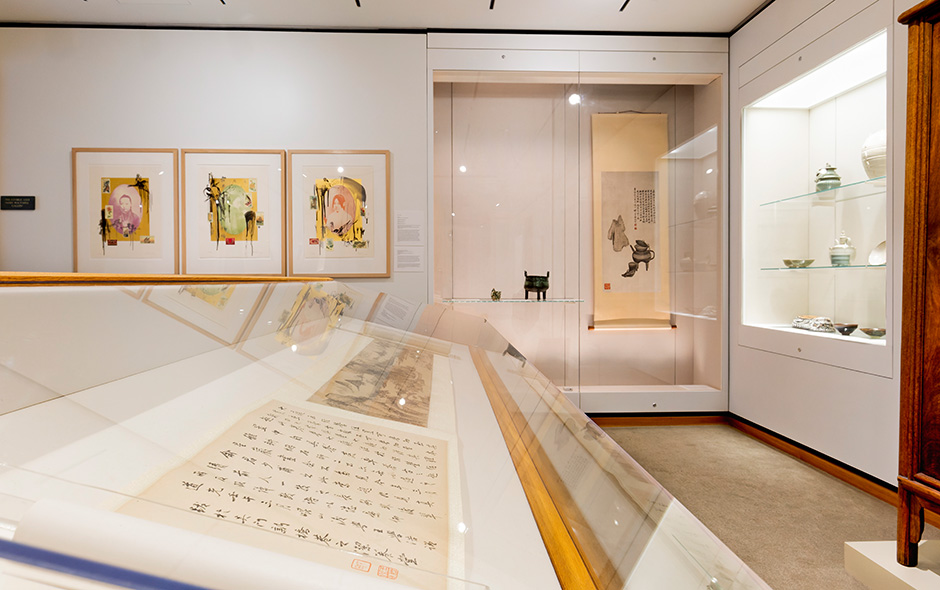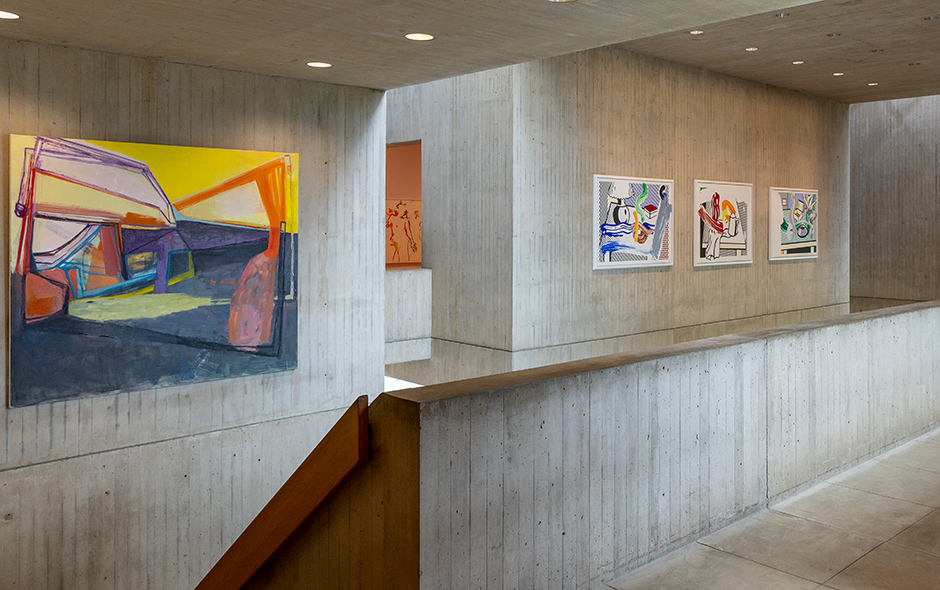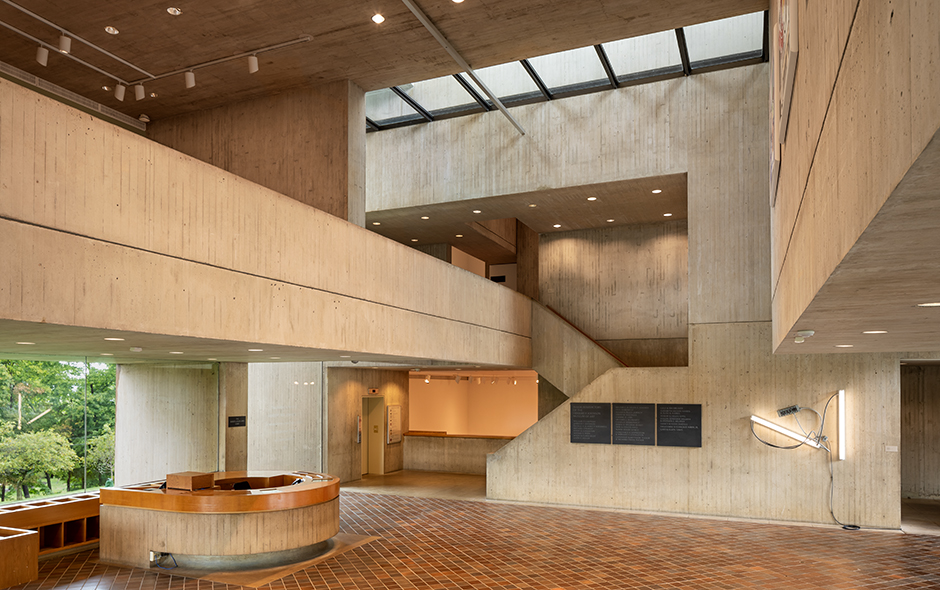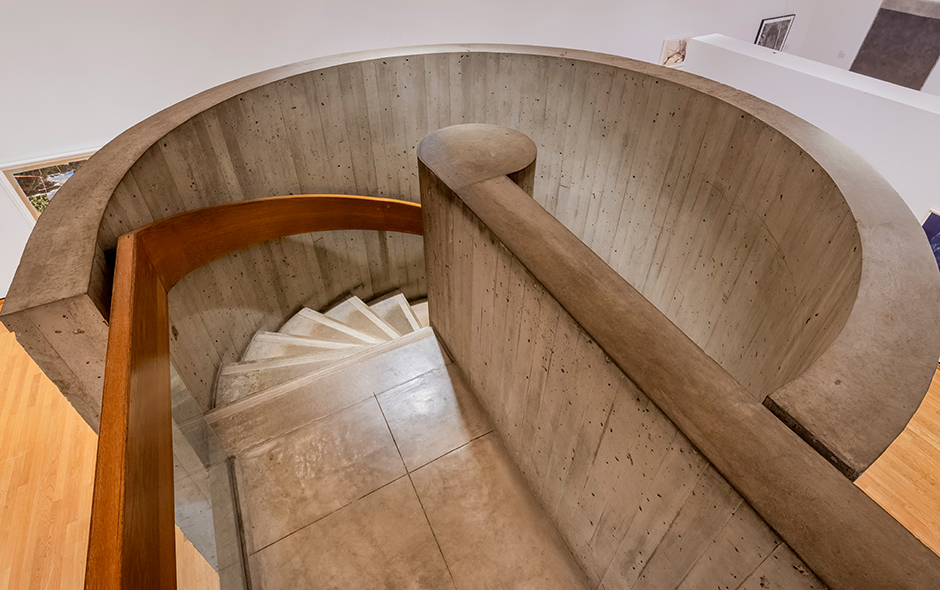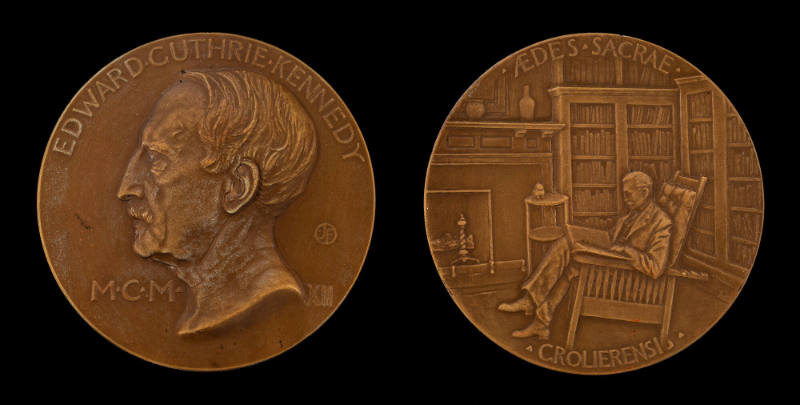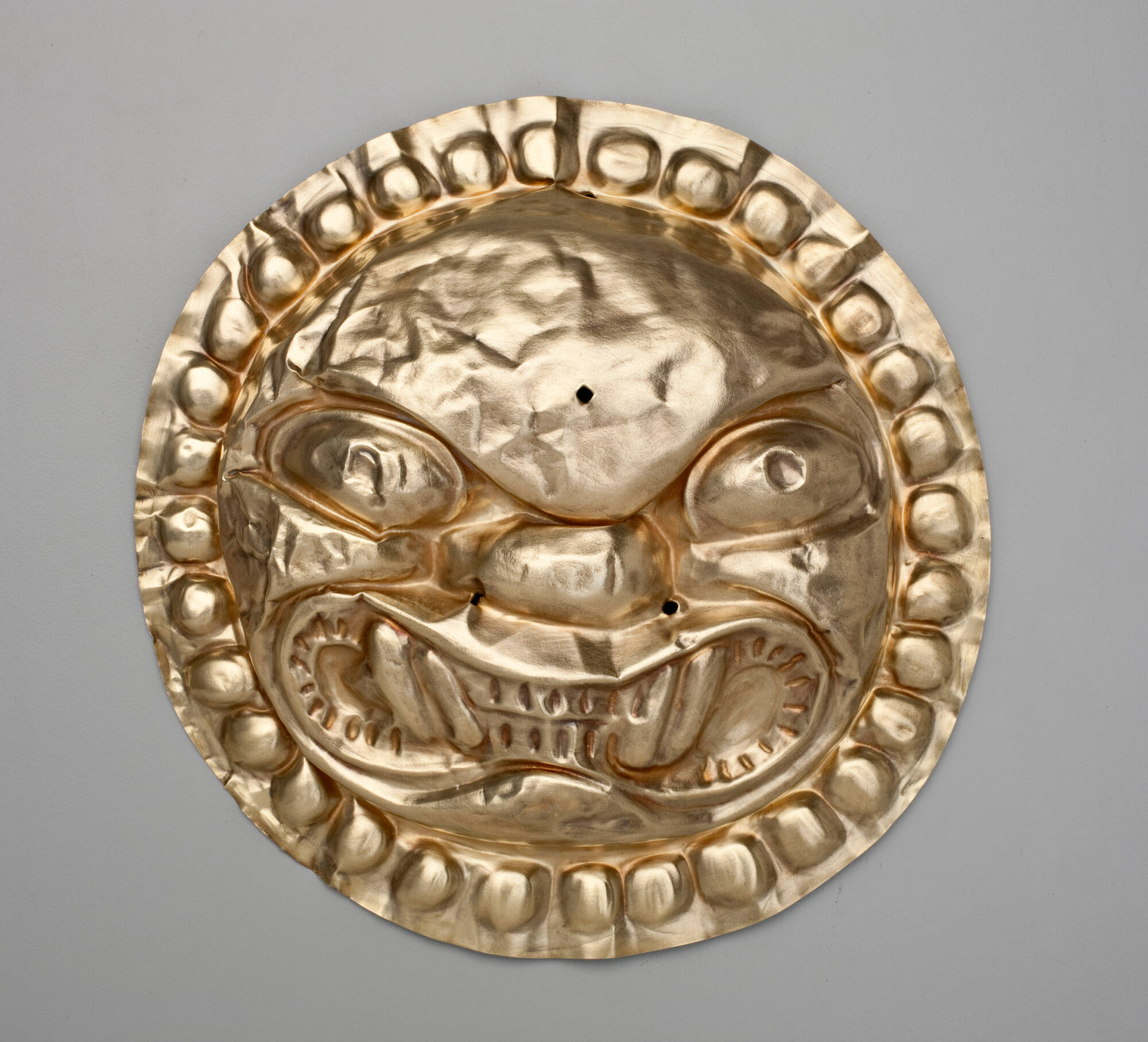
Object Details
Culture
La Tolita (Ecuador)
Date
ca. 300 BC–AD 500
Medium
Gold-copper alloy (tumbaga)
Dimensions
Diameter: 6 1/8 inches (15.6 cm)
Credit Line
Gift of Thomas Carroll, PhD 1951
Object
Number
2006.070.369
BRIEF DESCRIPTIONThis is a La Tolita breastplate made of a copper-gold alloy called tumbaga. The fac(…)
BRIEF DESCRIPTIONThis is a La Tolita breastplate made of a copper-gold alloy called tumbaga. The face, with its button nose and detailed fangs, is of a snarling feline.WHERE WAS IT MADE?This was made in the northern coastal region of what is now Ecuador, in the Esmeraldas province.HOW WAS IT MADE?Working with a flat sheet of metal, a goldsmith would likely have hammered the sheet from behind to create the three dimensional feline image. This technique is called repoussé. In Ecuador and Peru, goldsmithing was largely confined to the manipulation of sheet metal. This breastplate is made from a metal alloy called tumbaga. Tumbaga is formed from a mixture of copper and gold, and usually also contains some silver. The union of gold and copper was symbolic of sexual union, and metallurgy had connotations of procreation, fertility, and growth.The golden appearance of tumbaga objects was enhanced by a “depletion gilding” process, which involved coating or bathing the object in oxalic acid to remove copper and any other impurities or constituents of the tumbaga alloy, leaving a thin layer of shiny, chemically inert gold on the immediate surface.HOW WAS IT USED?This gold object was likely used as a breastplate. Gold objects were used to adorn textiles, to decorate architectural features such as walls and doorways, and for personal adornment as jewelry, largely in the form of nose rings, earrings or ear spools, headdresses, diadems, collars, pectorals, necklaces, and funerary masks. Because gold was scarce and not used for day-to-day utilitarian purposes, objects crafted from this precious metal are associated with the sacred, with power and prestige, and with status and wealth.WHY DOES IT LOOK LIKE THIS?The image of a fanged feline extends back to the Chavín culture (1000-400 BC), which also was the first to render images of their gods and myths in gold repoussé plaques. Notice how this feline face is surrounded by a border of rounded disks inside trapezoidal units like feathers radiating out from the center. This radiance suggests the sun, an association that the Peruvians made with gold. The yellow-gold color also relates to the predominant felines in the area: the jaguar and the ocelot.Another La Tolita artifact in the Johnson Museum’s collection, a ceramic figure, features a feline mask. To see this object, search for object number 2006.070.059 in the keyword search box.ABOUT THE LA TOLITA (OR TUMACO) CULTURE:Known as La Tolita on the Ecuadorian side of the border and Tumaco on the Colombian side of the border, the Tumaco/La Tolita culture area straddles the Ecuador/Colombia border near the Pacific coast. Living on tops of mounds (called tolas) in a series of semi-urban centers, La Tolita was a ranked society led by the chiefly elite, with craft specialists such as potters and goldsmiths (who were the first in the world to learn to work platinum). The people of La Tolita exploited coastal resources but also engaged in hunting and in farming maize and manioc (also known as yuca, cassava, or tapioca). Some excavated manioc graters are shaped like fish, a testament to the importance of marine foods. La Tolita ceramics are typically pale gray or white in color, and were frequently painted after firing in vivid colors such as red-orange. Figures often embody elements of both animals and people into mythical “monsters,” although many include naturalistic representations of animals such as jaguars, snakes, monkeys, and frogs. The La Tolita/Tumaco culture shares many characteristics with the neighboring Regional Development Period (500 BC-AD 500) cultures of Bahía, Guangala, and Jama-Coaque, all of which are local successors to the earlier, more widespread Chorrera cultural horizon.




